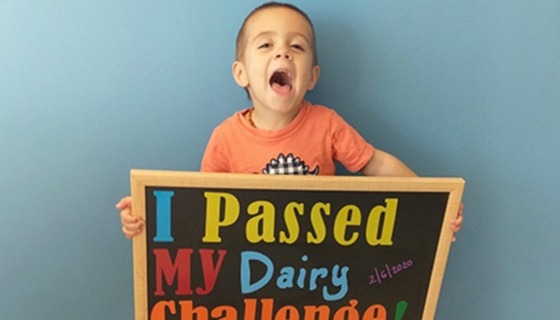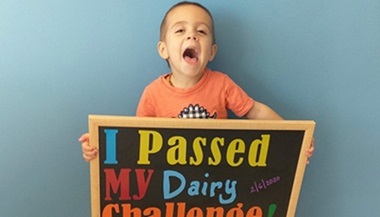Treating Food Allergies in Children
Featured Expert
On Call for All Kids - Treatment for Food Allergies in Kids - Johns Hopkins All Children's Hospital
As many as 6 million children in the United States have food allergies. That’s about 1 in every 13 children or about two per school classroom. Food allergies are on the rise overall with there being as many as 32 million Americans with food allergies, including 26 million adults.
According to the Centers for Disease Control and Prevention, the prevalence of food allergies among children increased 50% between 1997–2011. Allergic reactions to foods have become the most common cause of anaphylaxis in community health settings with more than 40% of children with food allergies experiencing a severe reaction.
On this week’s On Call for All Kids, Panida Sriaroon, M.D., medical director for the Johns Hopkins All Children’s Hospital Food Allergy Clinic, helps parents and caregivers understand how food allergies impact children.
What are the top allergies affecting children?
Eight foods account for 90% of reactions in the United States. They are milk, eggs, peanuts, tree nuts, soy, wheat, fish and shellfish. Sesame seed is now being recognized as another common food allergen. Of these foods, peanuts, tree nuts, fish and shellfish are usually lifelong allergies. Milk, egg, wheat and soy allergies tend to start in early childhood and eventually may be outgrown. Although these eight foods are the most common, more than 170 foods are known to cause food allergies.
How do we know if our child has a food allergy? What are the signs/symptoms?
Signs and symptoms of food allergy can vary and different people may display varying symptoms with each exposure to the food. Symptoms can develop in just a few minutes or slowly and take as long as a couple of hours.
You want to look for the following:
- A skin rash, hives or itching
- Swelling of the lips, face, tongue, throat or other body parts
- Difficulty breathing, wheezing, coughing or nasal congestion
- Stomach pain, nausea, vomiting or diarrhea
- Dizziness, lightheadedness or fainting
More severe symptoms like face and throat swelling, respiratory difficulties or dizziness and fainting require immediate attention in a hospital emergency department.
What are the steps to getting them the testing and treatment they need?
Steps for testing involve getting a detailed history from the parents or patient. This will help guide the allergist on what foods to test for. The next step would be ordering skin testing, blood testing or both to test for food allergies. Skin testing can be performed in the office and it is quick and non-invasive with parents having results in as little as 15 minutes. Blood testing can take a few days to get results but can be useful to help guide allergists in managing a patient and to correlate with skin test results.
If skin and blood tests show that the allergy is decreasing or if the allergy is questionable the next step in managing food allergies is the oral food challenge, where we feed your child the food they are allergic to. This is done in a controlled setting in an allergist’s office to help determine your child’s tolerance to a specific food or form of the food. An oral food challenge can definitively tell us if your child has outgrown his or her food allergy and can eat the food or if the allergy remains. It can also tell us if they can tolerate the food in a different form like baked milk or baked egg.
Avoidance is the most important step in managing a food allergy. There is no medication that can cure a food allergy so treatment is focused on avoiding the food and foods that contain it and treating accidental ingestions. Reading food labels and understanding the ingredients list is important in avoidance and an allergist can help with this.
In case of a systemic reaction, epinephrine should be administered into the child’s thigh. It is important that those with food allergy carry epinephrine devices, commonly known as EpiPen, and use it in case of reactions. There are several types of epinephrine autoinjector in the United States market now.
Parents can now choose to have their child avoid peanuts or they can treat the peanut allergy with oral immunotherapy. Oral immunotherapy is where patients ingest very small amounts of their allergic food at the allergist’s office and at home. The amount ingested is gradually increased over a period of several months with the goal of patients becoming desensitized to the food.
Overall, what do parents with or without kids with food allergies need to know?
If you are the parent of a food allergic child, then you need to know how to read food labels and what ingredients your child can and cannot eat. You should also know the signs and symptoms of an allergic reaction and how to manage it in the case of an accidental ingestion. Remember that these reactions can be life threatening and you’ll want to provide treatment and seek emergency care immediately.
If your child doesn’t have food allergies, then just be aware that they exist. Remember about two children in every classroom have food allergies. If you have birthday parties or holiday parties with your child’s friends, make sure you talk to their parents and are aware of any food allergies their children may have.
Johns Hopkins All Children's Food Allergy Clinic

We provide testing and treatment for children with food allergies at Johns Hopkins All Children's Hospital in St. Petersburg, Florida, and work with families to help them learn how to best manage their child’s allergy at home and school.







